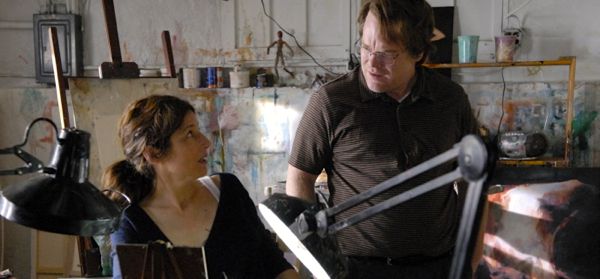
By Ray Bennett
CANNES – Oscar-winning screenwriter Charlie Kaufman’s first film as a director, “Synecdoche, New York,” will mesmerize some and mystify others, while many will be bored silly.
It’s not a dream, Kaufman says, but it has a dreamlike quality, and those won over by its otherworldly jigsaw puzzle of duplicated characters, multiple environments and shifting time frames will dissect it endlessly.
Not bound for mainstream audiences, the hard-to-pronounce title, which sort of rhymes with Schenectady, N.Y., where it’s set, will require careful nurturing to find its audience. That could take some time. The film premiered in competition at Cannes.
Philip Seymour Hoffman is perfect in the role of Caden Cotard, a regional theater director who wins a lucrative genius award just as his artist wife, Adele (Catherine Keener), is leaving him because he has “disappointed” her.
From the Greek word, meaning something that represents a bigger thing, as in the White House for the U.S. administration or Hollywood for the movie industry, “synecdoche” sums up what Caden creates to fill the gulf created when Adele takes their daughter to live in Berlin.
Determined to make a success, he takes over a vast building in which he plans to stage an ongoing drama with an enormous cast that ultimately matches and sometimes replaces what is happening in real life. He has a love affair with cheeky box office clerk Hazel (Samantha Morton) and later casts lookalike Brit Tammy (Emily Watson) to play her in his never-ending show.
He hires beautiful actress Claire to play his wife and then marries her for real when Hazel falls for hunky Derek (Paul Sparks).
Visiting Berlin in real time, Caden discovers that his daughter Olive (Sadie Goldstein) has been more or less adopted by the very intense Maria (Jennifer Jason Leigh).
Time flies by in decades, though some characters age and others do not. Caden hires an actor named Sammy (Tom Noonan) to play him, and with two Hazels and two Cadens, life is bound to become even more confusing. Later, famed actress Millicent Weems (Dianne Wiest) joins the cast to play a maid, but when Tom dies she takes over the role of Caden.
None of this is easy to follow, and it requires concentration to stay up with all the changing characters and the many abrupt moves in all directions, but such is Kaufman’s confidence as a filmmaker and his wonderful ability to write memorable dialogue that the converted will follow him anywhere.
Many scenes are flat-out hilarious — Hazel lives in a house that is constantly on fire and filled with flames and smoke — but the film has a deeply affecting aura of true melancholy. Mankind’s knowledge of death and the unknowable depths of other people’s minds are central to the story. Some sequences are simply there because it’s the movies and movies should be fun, but others are both poetic and profound.
Disappointment and regret are key elements along with the muddled illusions, delusions and misapprehensions that afflict most of us. With his theatrical intellect, Caden is persuaded that in the world’s population not one person is an extra; they are all the lead in their own story. Kaufman’s ambitious and invigorating film finds that ineffably sad.
But before he closes with a scene of almost unbearable gravity, he gets in lots of gags including a series of titles Caden comes up with for his epic production, not the least of which is “Infectious Diseases in Cattle.”
Venue: Festival de Cannes; Cast: Philip Seymour Hoffman, Samantha Morton, Michelle Williams, Catherine Keener, Emily Watson, Dianne Wiest, Jennifer Jason Leigh, Hope Davis, Tom Noonan; Director: Charlie Kaufman; Screenwriter: Charlie Kaufman. Director of photography: Fred Elmes; Production designer: Mark Friedberg; Music: John Brion; Costume designer: Melissa Toth; Editor: Robert Frazen; Producers: Anthony Bregman, Spike Jonze, Charlie Kaufman, Sidney Kimmel; Executive producers: William Horberg, Bruce Toll, Ray Angelic; Sales: Kimmel International; Rated R; running time, 104 minutes.
This review appeared in The Hollywood Reporter


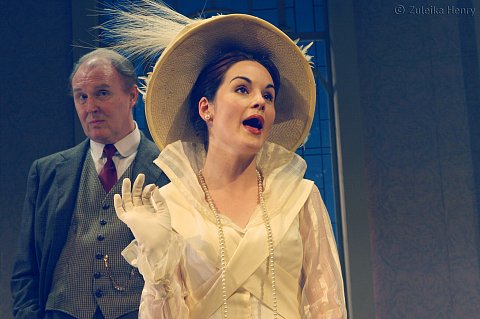

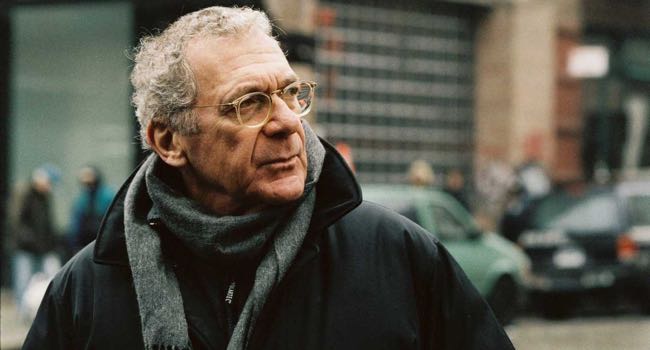
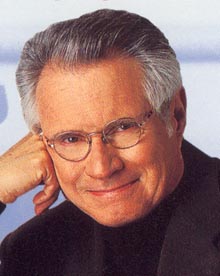
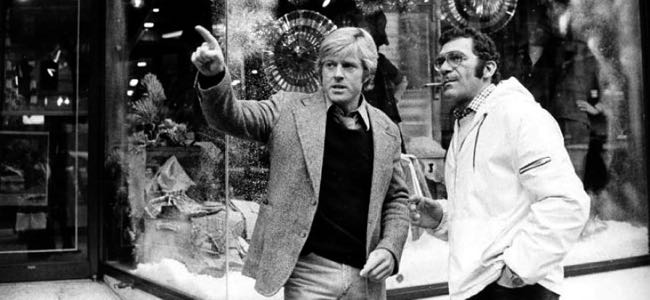
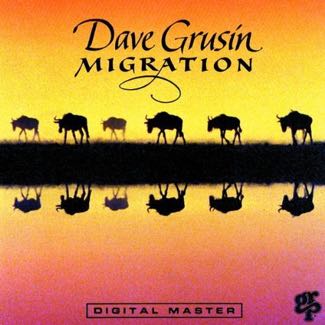
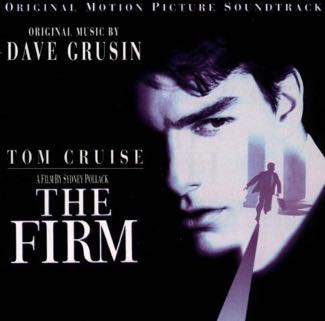


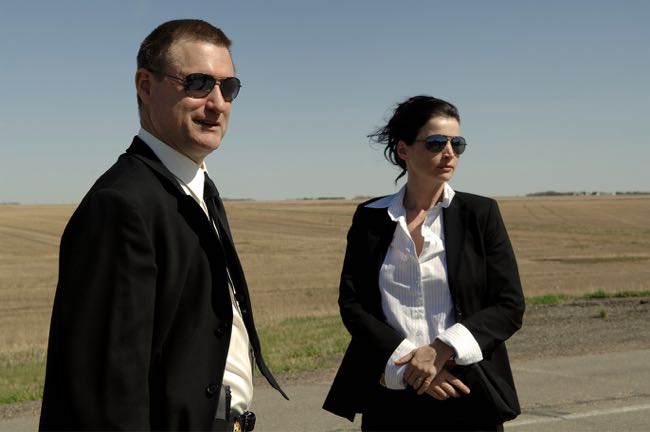

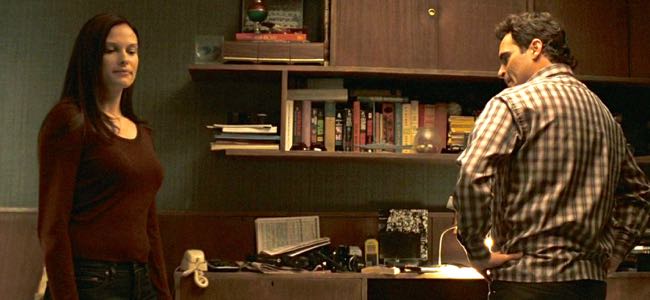
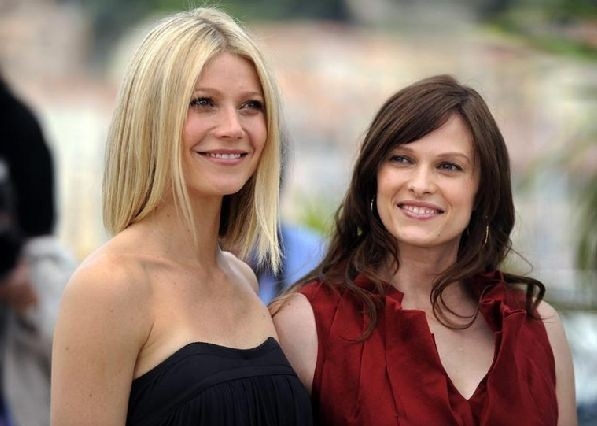
‘Gone With the Wind’ musical to close
LONDON — To no one’s great surprise, Trevor Nunn’s West End production of a new musical version of “Gone With the Wind” will soon be just that and plans for a New York production have been shelved.
The show, which took a critical drubbing following its world premiere on April 5, has failed to attract substantial U.K. audiences and will close this month after just 79 performances.
There will be no tomorrow for Margaret Martin’s adaptation of the Margaret Mitchell novel after Saturday June 14 although producer Aldo Scrofani insists the show has its fans. “Despite the critical response, the company have enjoyed much praise from audience members during our run and for that we are grateful,” he said.
Announcing what he called a difficult decision to close the production, Scrofani said: “Plans for a New York production are currently on hold but in the meantime we are pursuing various options that have been presented to us from interested parties worldwide.”
A show can sometimes thrive when it cuts and runs, witness “The Lord of the Rings,” which failed in Toronto but was revamped and has survived at the Theatre Royal Drury Lane since May 2007. It will run at least through July 19. But fans of big musicals are spoilt for choice in London.
Competition in the West End is fierce with several top-flight productions enjoying profitable runs including “Billy Elliot” at the Victoria Palace; “Hairspray” at the Shaftesbury; “Jersey Boys” at the Prince Edward; “The Lion King” at the Lyceum; and “The Sound of Music” at the London Palladium.
Other long-running musicals in town appealing to a wide range of taste include “Avenue Q,” “Blood Brothers,” “Buddy,” “Cabaret,” “Chicago,” “Grease,” “Les Miserables,” “Mamma Mia,” “Spamalot,” “Stomp,” “The Phantom of the Opera,” “We Will Rock You” and “Wicked.”
There are plenty more to come. Joining the just-opened “Marguerite” at the Theatre Royal Haymarket and “Dickens Unplugged” at the Comedy, will be “Disney’s High School Musical,” “Edward Scissorhands,” “Zorro the Musical” and, at year’s end, a revival of Lionel Bart’s “Oliver!” starring Rowan Atkinson (“Mr. Bean”) as Fagin.
This story appeared in The Hollywood Reporter.